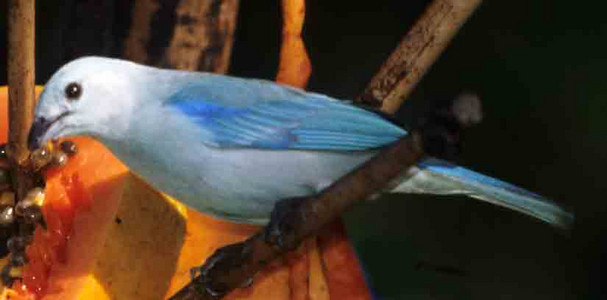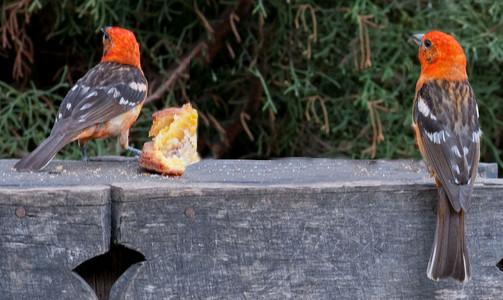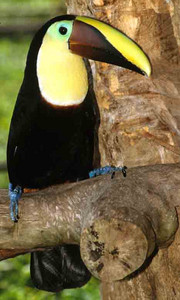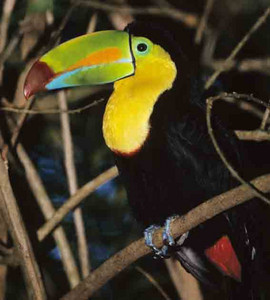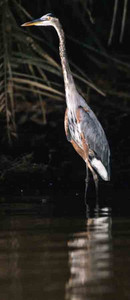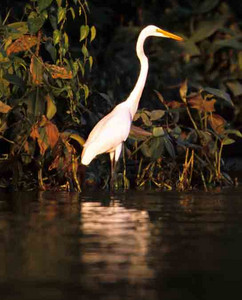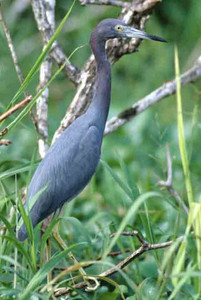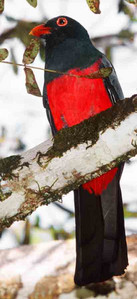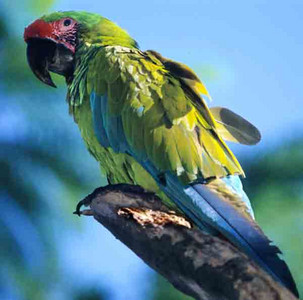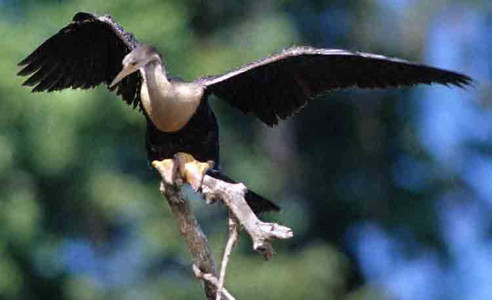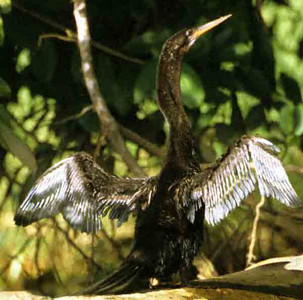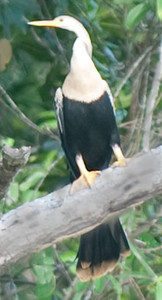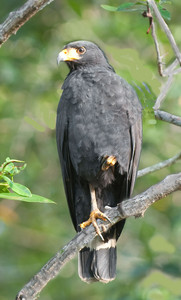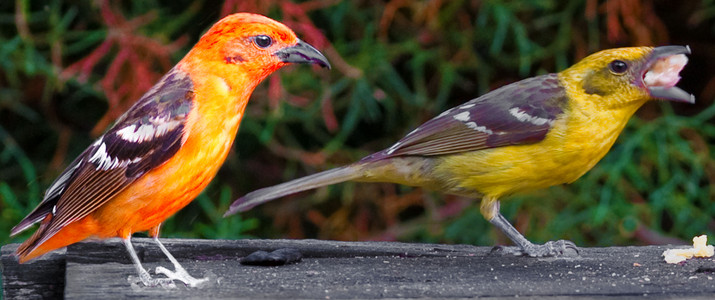
Flame-Colored Tanagers
A pair of Flame-Colored Tanagers eating cake set out for them by the lady of the house. You will see that the female has a mouthfull, while the orangish male behind her waits patiently.This difference in color of the male & female is termed sexual dimorhphism. [Costa Rica'10].

Flame-Colored Tanagers
Three Flame-Colored Tanagers: I have grouped the two different males with the female in the center. The male on the right seemed thinner -- perhaps a younger bird than the one on the other end.
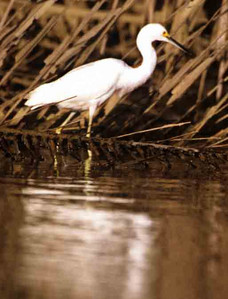
Snowy Egret
Snowy Egret. The difference in appearance from the Great White Egret is the dark color on the top of its bill. [Tortuguera River, Costa Rica].
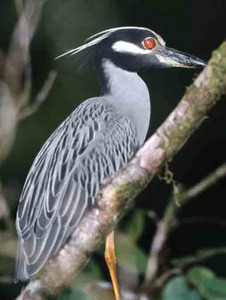
Yellow Crowned Night Heron
Yellow-Crowned Night Heron. The yellow crown is present during breeding season. [Costa Rica].
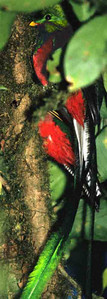
Resplendant Quetzal
The Resplendent Quetzal male has a long, double tail that can be seen trailing behind him as he flies at great height through the forest. This is a pair that has come down to look for a nesting site. [Monteverdi, Costa Rica].
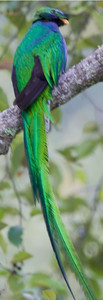
Resplendent Quetzal
This is the male Resplendent Quetzal in breeding season showing off his 2-foot long twin tail. Note the beautiful pastel shades of green and blue on his upper back and head. He is not a big bird -- his body-size being about that of a small pigeon.[Costa Rica'10].
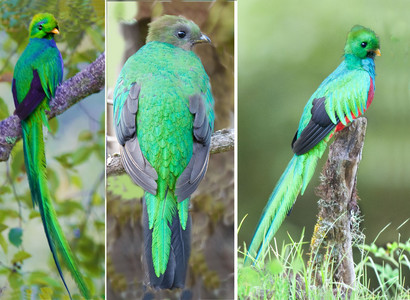
Resplendent Quetzals
Triple image of 3 Resplendent Quetzals. Different males are on each end, and a female is in the middle. The male on the right has turned slightly so that we can see some of the bright carmine breast. (Please read text of previous image). [Costa Rica'10].
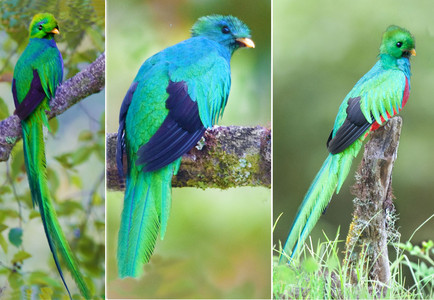
Resplendent Quetzals
Triple image:The Resplendent Quetzals males on the ends are the same as in the preceding image, except for the different female in the middle. She is a more beautifully colored female than the one in the preceding triplicate. The pastel blue of her back and head reminds me of the impressionist painters. Both sexes have the bright carmine breast. The Quetzals' habit of always turning their backs towards us must have been a security gesture, done deliberately to blend with the green background of the forest behind them. (Mentioned previously by Janzen). [Costa Rica'10].
